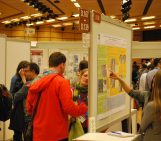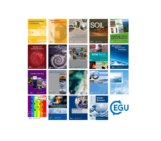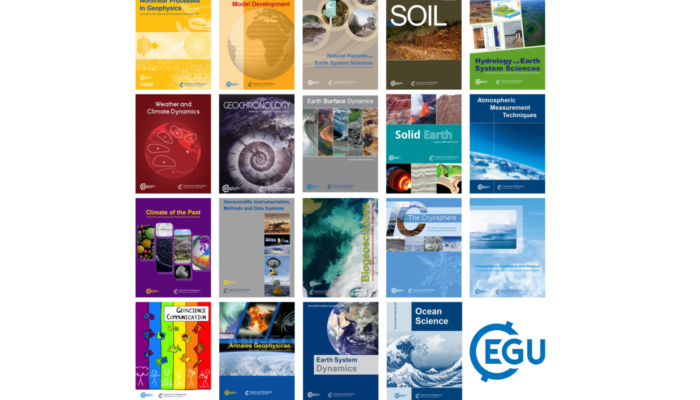
Each month we feature specific Divisions of EGU and during the monthly GeoRoundup we will be putting the journals that publish science from those Divisions at the top of the Highlights roundup. For August, the Divisions we are featuring are: Climate: Past, Present and Future (CL), Energy, Resources and Environment (ERE) and Geosciences Instrumentation and Data Systems (GI). They are served by the journals: Geoscientific Model Development (GMD), Climate of the Past (CP), Geoscientific Instrumentation, Methods and Data Systems (GI), Earth System Dynamics (ESD) and Weather and Climate Dynamics (WCD).
Featured highlights
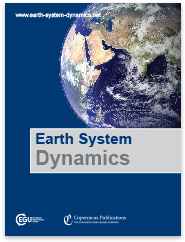 Multi-century dynamics of the climate and carbon cycle under both high and net negative emissions scenarios -15 August 2022
Multi-century dynamics of the climate and carbon cycle under both high and net negative emissions scenarios -15 August 2022
We explore the long-term dynamics of Earth’s climate and carbon cycles under a pair of contrasting scenarios to the year 2300 using six models that include both climate and carbon cycle dynamics. One scenario assumes very high emissions, while the second assumes a peak in emissions, followed by rapid declines to net negative emissions. We show that the models generally agree that warming is roughly proportional to carbon emissions but that many other aspects of the model projections differ.
We modelled water budget developments of viticultural growing regions on the spatial scale of individual vineyard plots with respect to landscape features like the available water capacity of the soils, slope, and aspect of the sites. We used an ensemble of climate simulations and focused on the occurrence of drought stress. The results show a high bandwidth of projected changes where the risk of potential drought stress becomes more apparent in steep-slope regions.
Glacial runoff buffers droughts through the 21st century – 19 August 2022
Global climate models suggest that droughts could worsen over the coming century. In mountain basins with glaciers, glacial runoff can ease droughts, but glaciers are retreating worldwide. We analysed how one measure of drought conditions changes when accounting for glacial runoff that changes over time. Surprisingly, we found that glacial runoff can continue to buffer drought throughout the 21st century in most cases, even as the total amount of runoff declines.
Geoscientific Model Development:
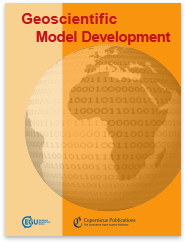 Training a supermodel with noisy and sparse observations: a case study with CPT and the synch rule on SPEEDO – v.1 – 8 August 2022
Training a supermodel with noisy and sparse observations: a case study with CPT and the synch rule on SPEEDO – v.1 – 8 August 2022
In this study, we present a novel formulation to build a dynamical combination of models, the so-called supermodel, which needs to be trained based on data. Previously, we assumed complete and noise-free observations. Here, we move towards a realistic scenario and develop adaptations to the training methods in order to cope with sparse and noisy observations. The results are very promising and shed light on how to apply the method with state of the art general circulation models.
Other highlights
Atmospheric Chemistry and Physics:
Assessing the consequences of including aerosol absorption in potential stratospheric aerosol injection climate intervention strategies – 3 August 2022
New insights on the prevalence of drizzle in marine stratocumulus clouds based on a machine learning algorithm applied to radar Doppler spectra – 22 August 2022
Australian wildfire smoke in the stratosphere: the decay phase in 2020/2021 and impact on ozone depletion – 24 August 2022
Atmospheric Measurement Techniques:
Determination of atmospheric column condensate using active and passive remote sensing technology – 29 August 2022
The onset of the spring phytoplankton bloom in the coastal North Sea supports the Disturbance Recovery Hypothesis – 1 August 2022
Gaps in network infrastructure limit our understanding of biogenic methane emissions for the United States – 12 August 2022
Natural Hazards and Earth System Sciences:
Invited perspectives: Challenges and step changes for natural hazard – perspectives from the German Committee for Disaster Reduction (DKKV) – 26 August 2022
Nonlinear Processes in Geophysics:
Lévy noise versus Gaussian-noise-induced transitions in the Ghil–Sellers energy balance model – 5 August 2022
Currents generated by the sea breeze in the southern Caspian Sea – 10 August 2022
EGU science in the news – August 2022
- Heat waves thawing Arctic permafrost (Phys.org), based on a study published in the EGU journal The Cryosphere
- Scientists have issued a dire warning about a massive extinction event brought on by climate change (Nature World News) based on an EGU press release
- Cleaner air as a result of coronavirus lockdown (Science Daily), highlights a recent paper published in the EGU journal Atmospheric Chemistry and Physics
- Thawing Arctic hillsides are major climate change contributors (Science Daily) on a recent paper published in the EGU journal The Cryosphere
- New model developed to predict landslides along wildfire burn scars (Newswires via National Science Foundation), based on an EGU press release

